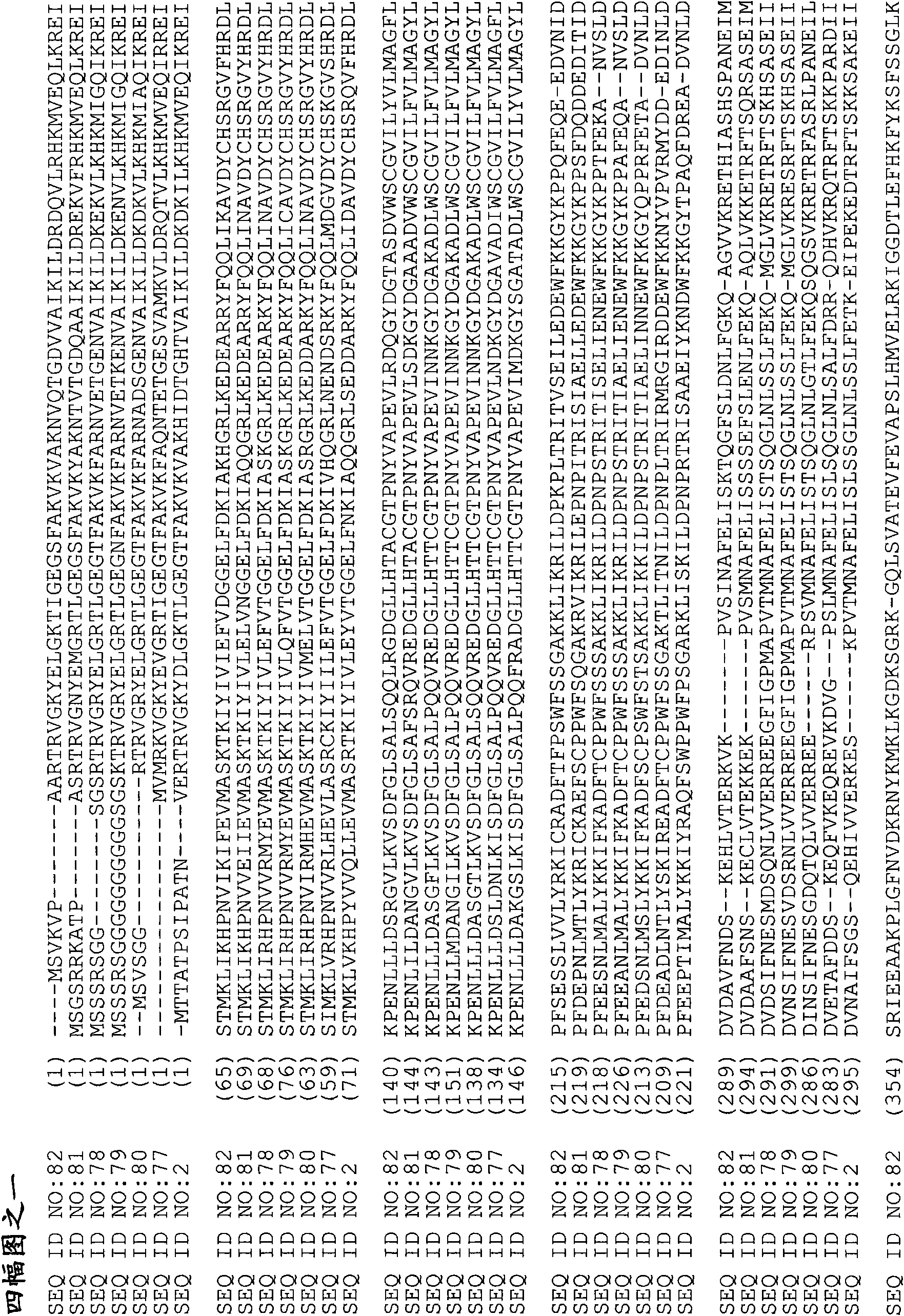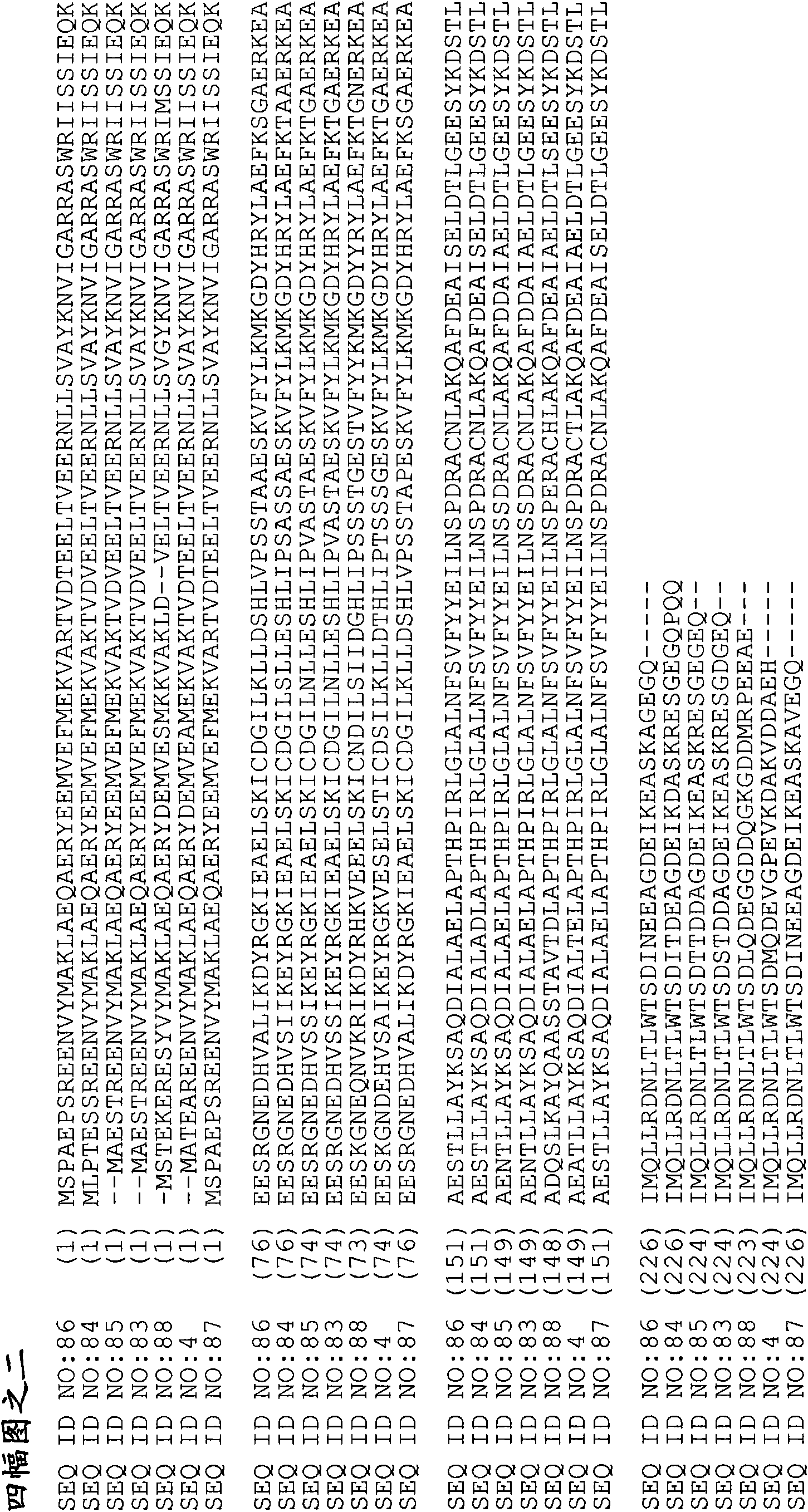Transgenic plants with increased stress tolerance and yield
A technology of transgenic plants and plants, applied in plant peptides, plant products, genetic engineering, etc., can solve problems such as weight gain
- Summary
- Abstract
- Description
- Claims
- Application Information
AI Technical Summary
Problems solved by technology
Method used
Image
Examples
Embodiment 1
[0079] Identification of open reading frames in Physcomitrella patens
[0080] A cDNA library prepared from the plant species Physcomitrella patens (Hedw.) B.S.G. from the collection of the Department of Genetic Research of the University of Hamburg was sequenced using standard methods. The plants were originally derived from strain 16 / 14 in the H.L.K. Whitehouse collection at Gransden Wood, Huntingdon (UK), subcultured from spores by Engel (1968, Am. J. Bot. 55:438-446).
[0081] Partial cDNA (EST) of Physcomitrella patens was identified using the EST-MAX program (Bio-Max (Munich, Germany)) in the Physcomitrella patens EST sequencing project. The full-length nucleotide cDNA sequence was determined using known methods. Amino acid sequence identities and similarities of the disclosed polypeptide sequences to known protein sequences are shown in Tables 2-5 (pairwise comparison used with Align and default settings).
[0082] Table 2
[0083] Comparison of EST462 (SEQ ID NO: 2)...
Embodiment 2
[0095] Cloning full-length cDNA from other plants
[0096] Canola, soybean, rice, maize, linseed, and wheat plants were grown under various conditions and treatments, and different tissues were harvested at various developmental stages. Plant growth and harvesting is performed in a strategic manner to maximize the probability of harvesting all expressible genes in at least one or more of the generated libraries. mRNA was isolated from each pooled sample, and a cDNA library was constructed. No amplification step was applied during library preparation to minimize gene redundancy within samples and preserve expression information. All libraries were generated from 3' from mRNA purified on oligo-dT columns. Colonies obtained by transforming Escherichia coli with the cDNA library were randomly picked and placed in microtiter plates.
[0097] Plasmid DNA was isolated from E. coli colonies and blotted onto membranes. A group of 288 species 33 P radiolabeled 7-membered (mer) olig...
Embodiment 3
[0205] Stress tolerant Arabidopsis plants
[0206] The fragment containing the Physcomitrella patens polynucleotide was ligated into a binary vector containing a selectable marker gene. The resulting recombinant vector contains the corresponding gene in sense orientation under the control of a constitutive superpromoter. The recombinant vectors were transformed into Agrobacterium tumefaciens C58C1 and PMP90 plants according to standard conditions. Arabidopsis ecotype C24 plants were grown and transformed according to standard conditions. T1 plants are screened for resistance to the selection agent conferred by the selectable marker gene, and T1 seeds are collected.
[0207] Physcomitrella patens polynucleotides are overexpressed in Arabidopsis under the control of a constitutive promoter. T2 and / or T3 seeds are screened in plates for resistance to the selection agent conferred by the selectable marker gene, and positive plants are transplanted into soil and grown in a growt...
PUM
 Login to View More
Login to View More Abstract
Description
Claims
Application Information
 Login to View More
Login to View More - Generate Ideas
- Intellectual Property
- Life Sciences
- Materials
- Tech Scout
- Unparalleled Data Quality
- Higher Quality Content
- 60% Fewer Hallucinations
Browse by: Latest US Patents, China's latest patents, Technical Efficacy Thesaurus, Application Domain, Technology Topic, Popular Technical Reports.
© 2025 PatSnap. All rights reserved.Legal|Privacy policy|Modern Slavery Act Transparency Statement|Sitemap|About US| Contact US: help@patsnap.com



